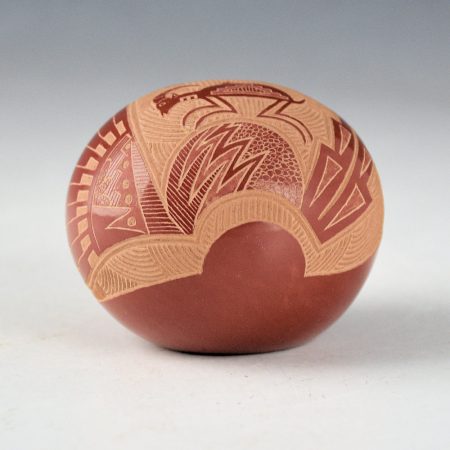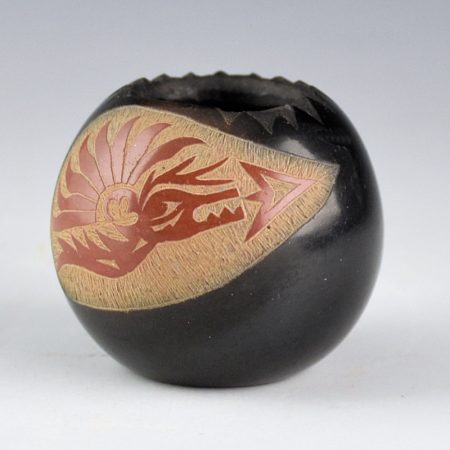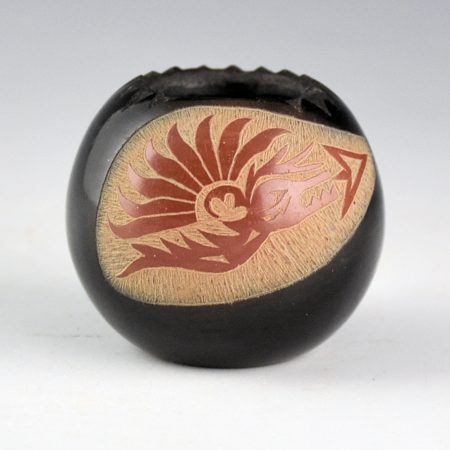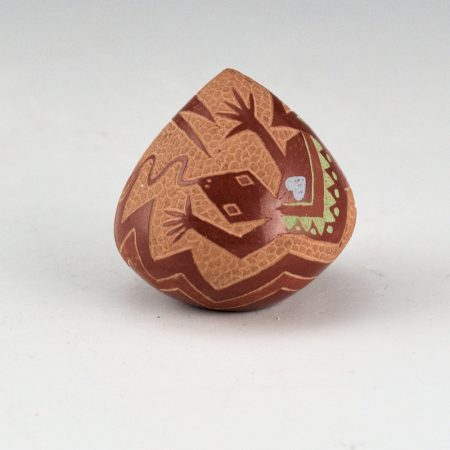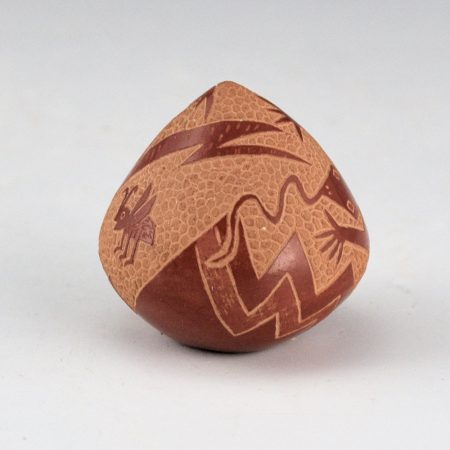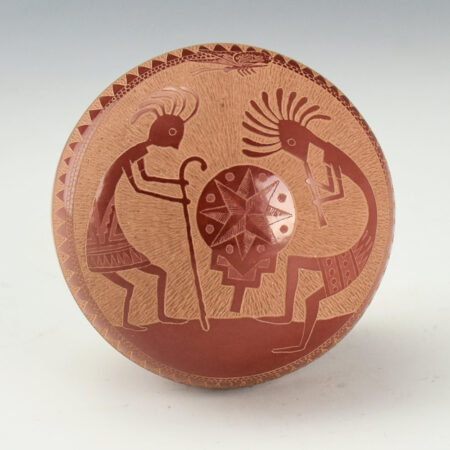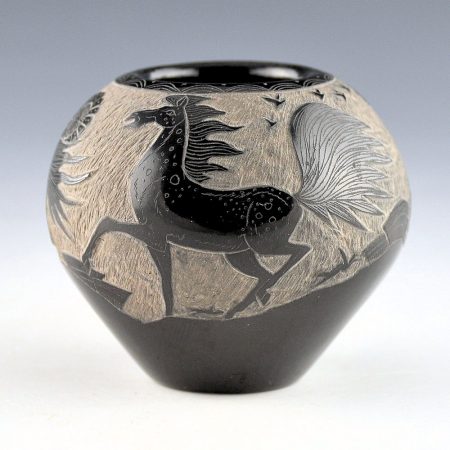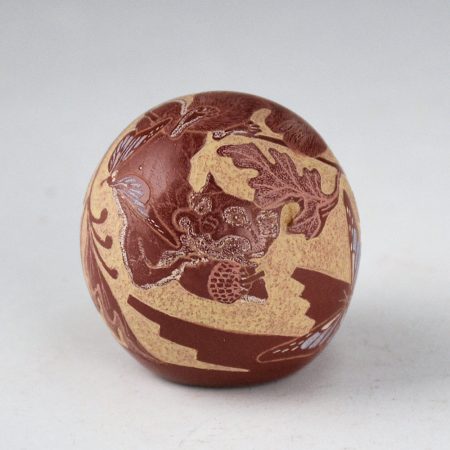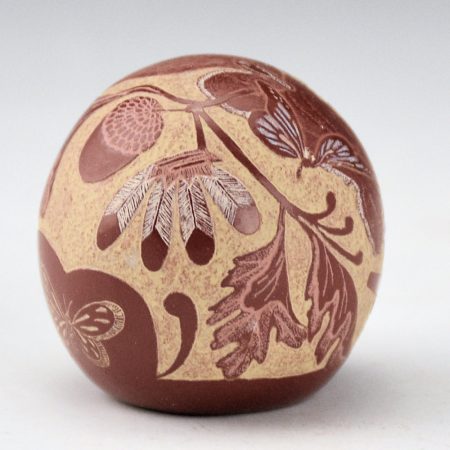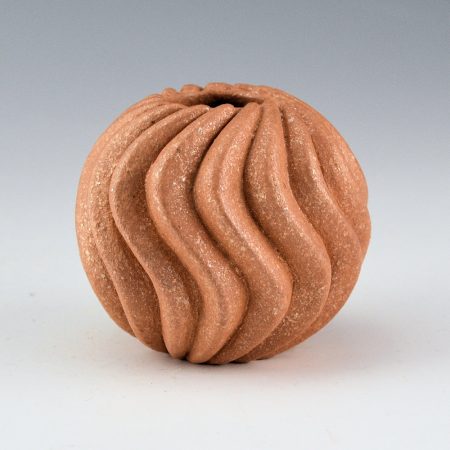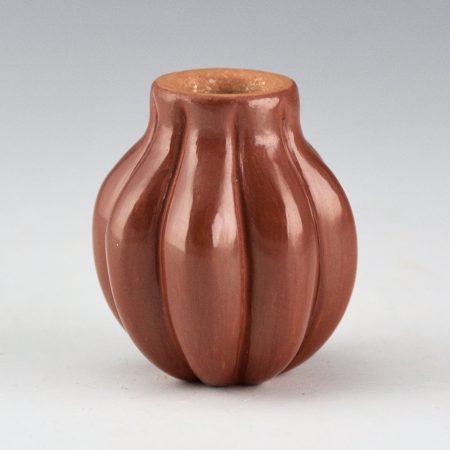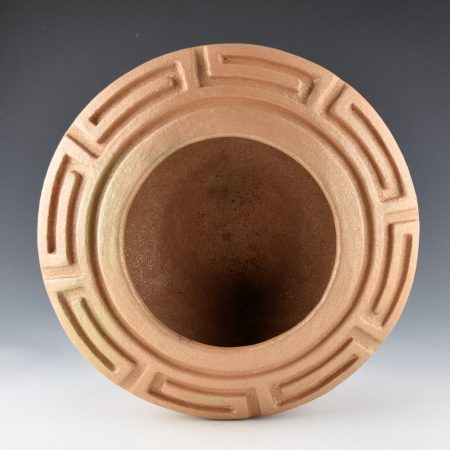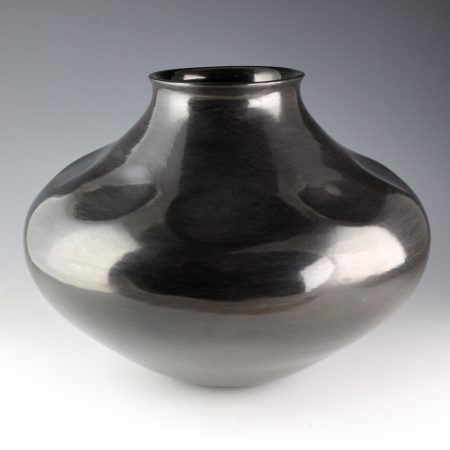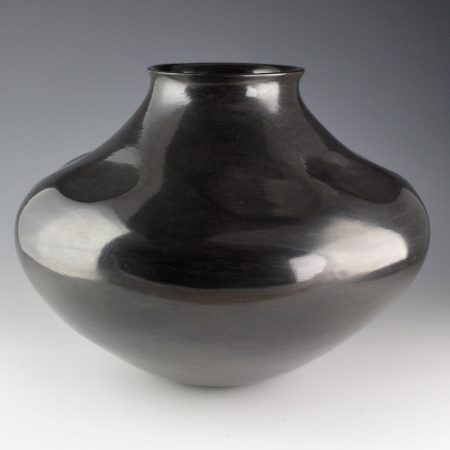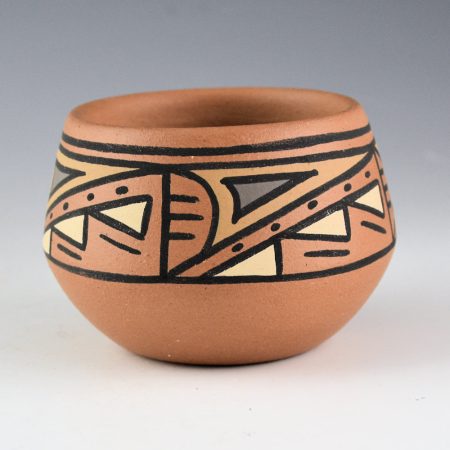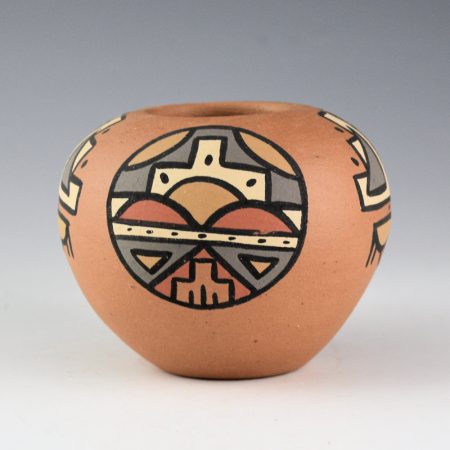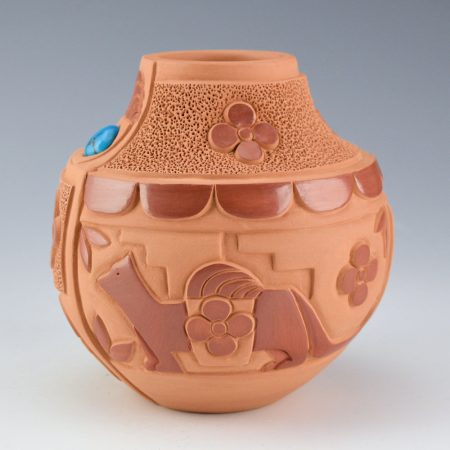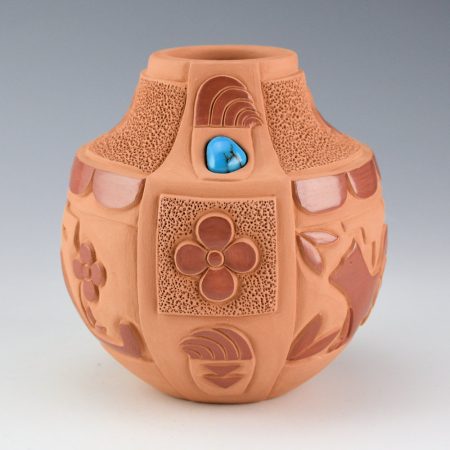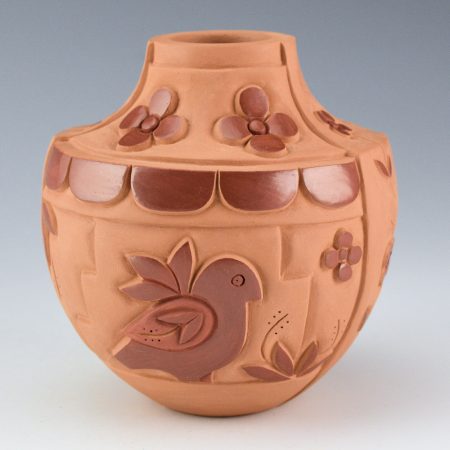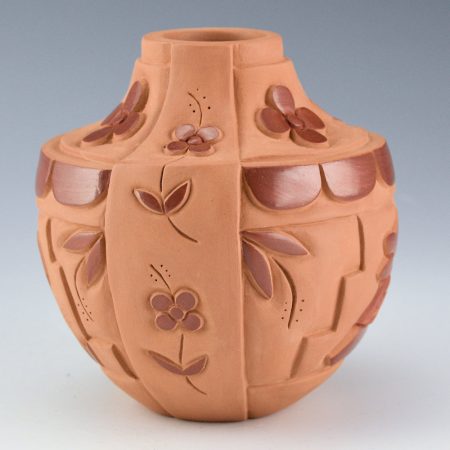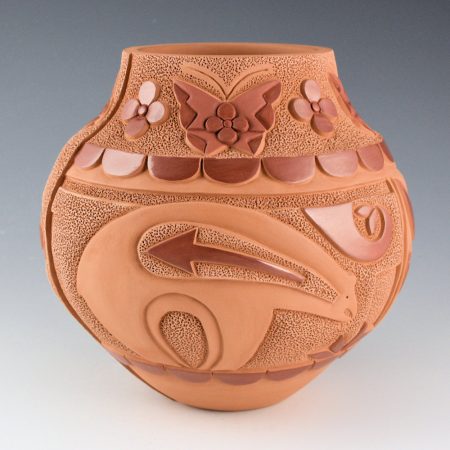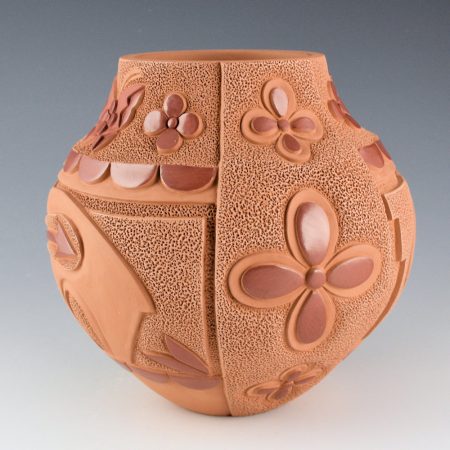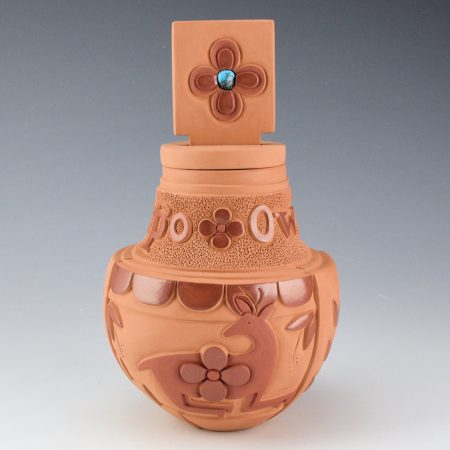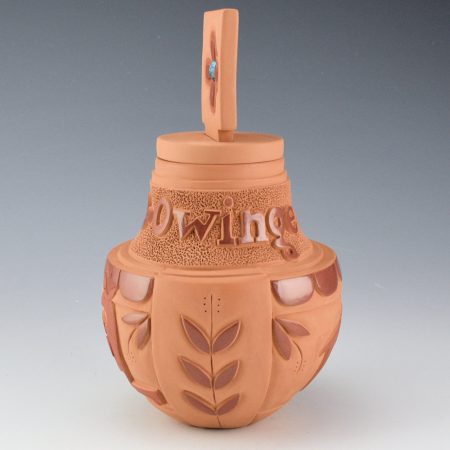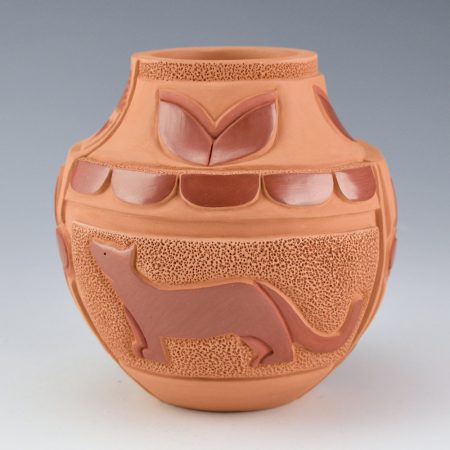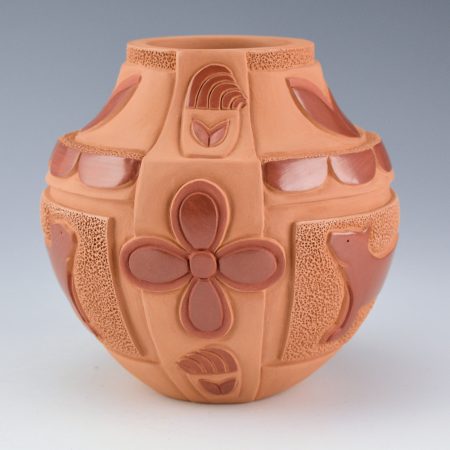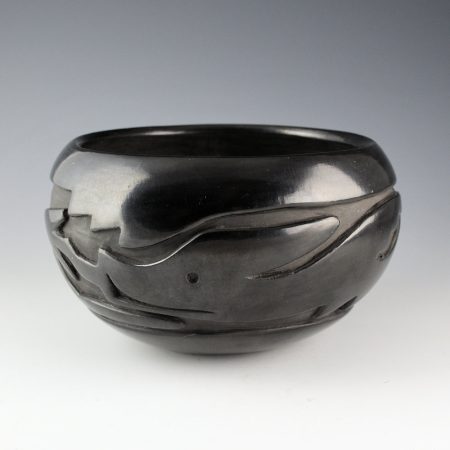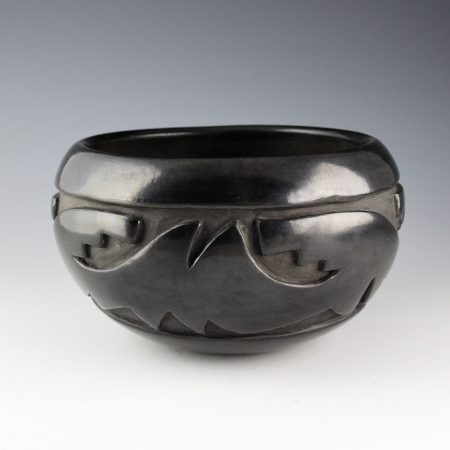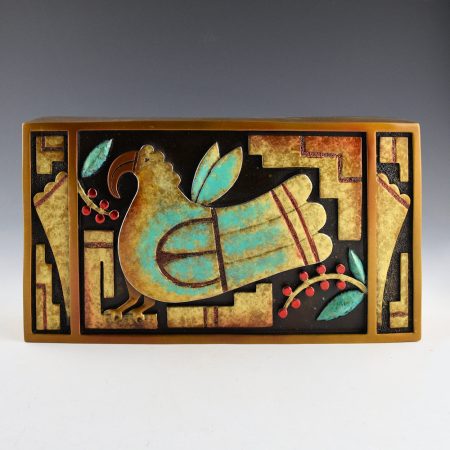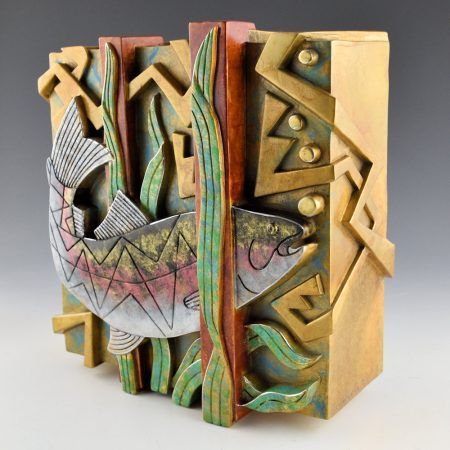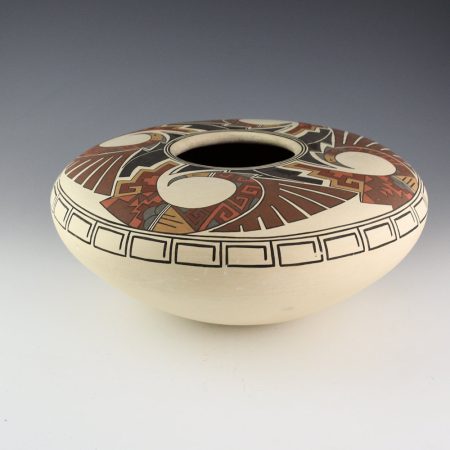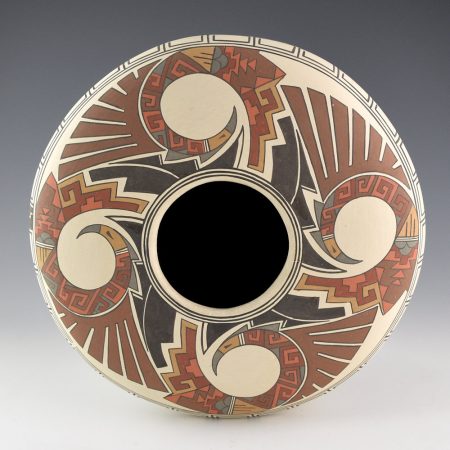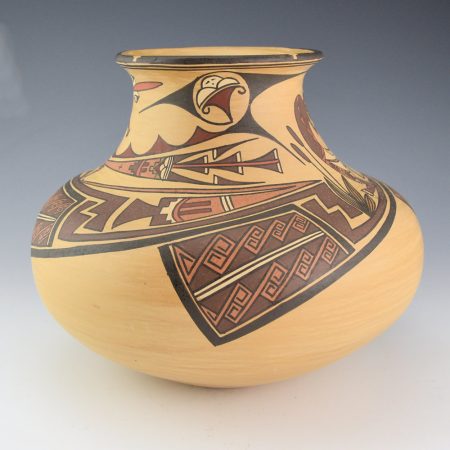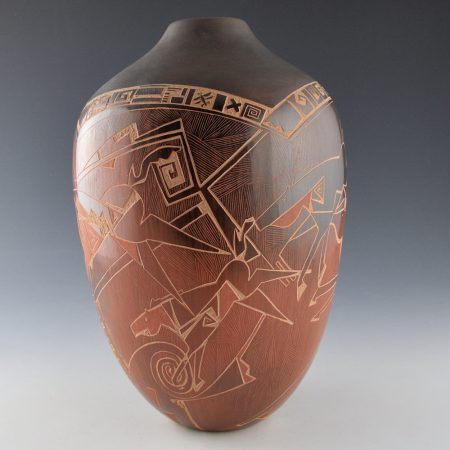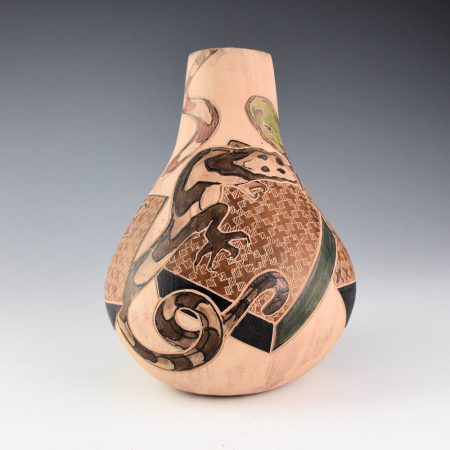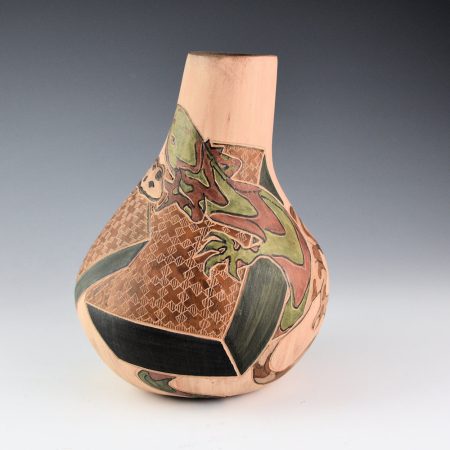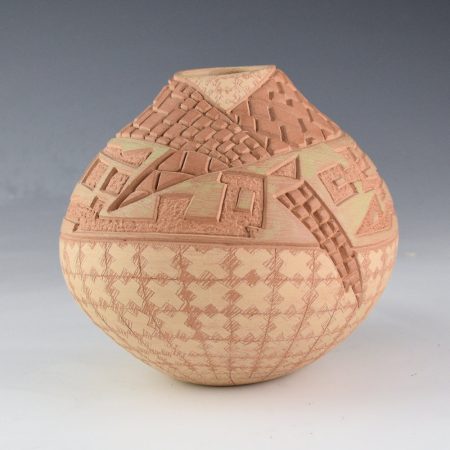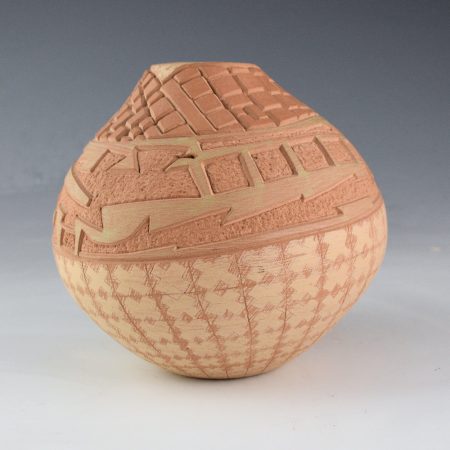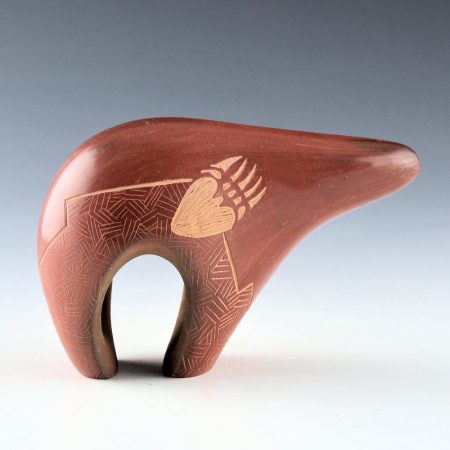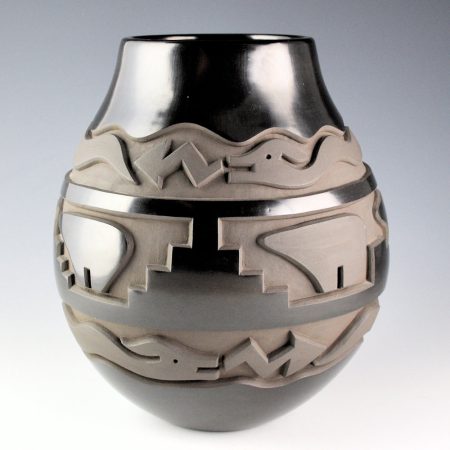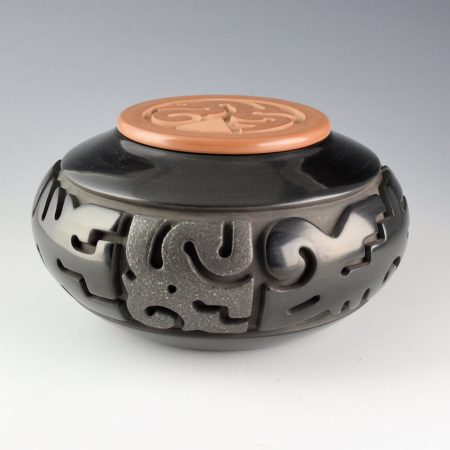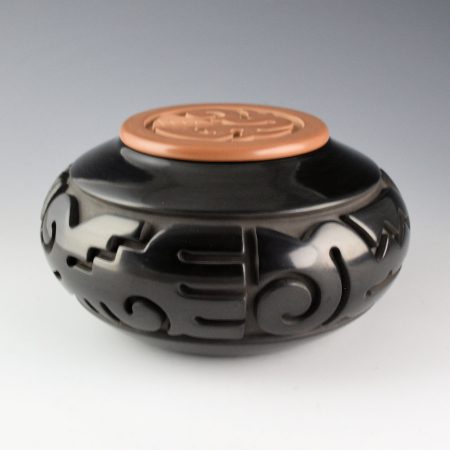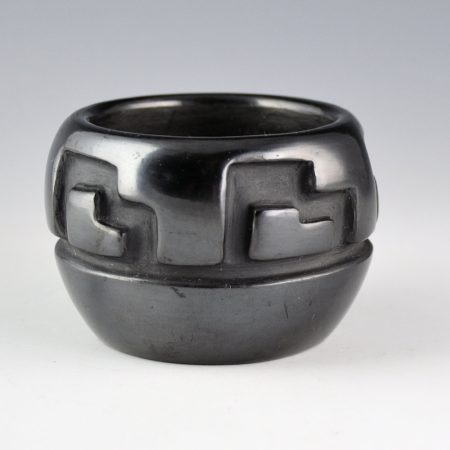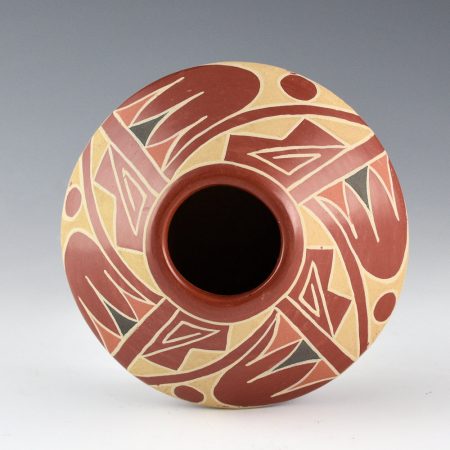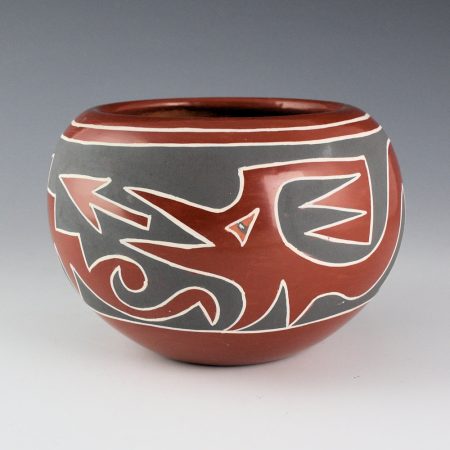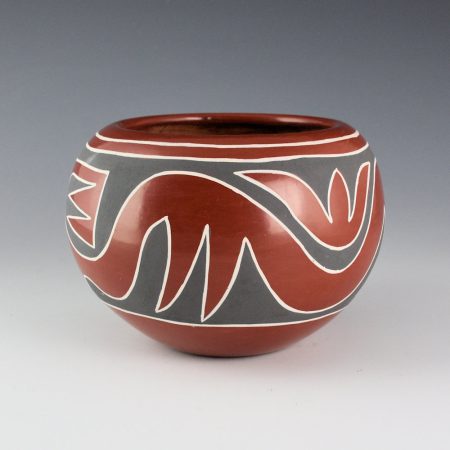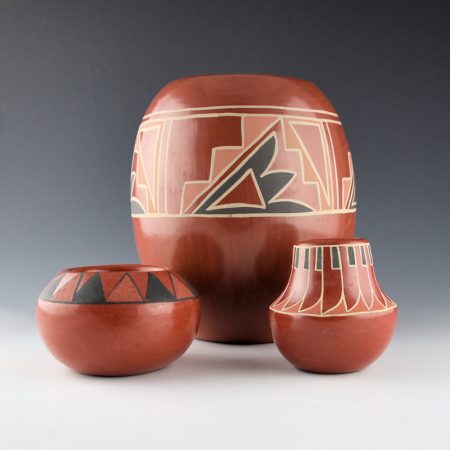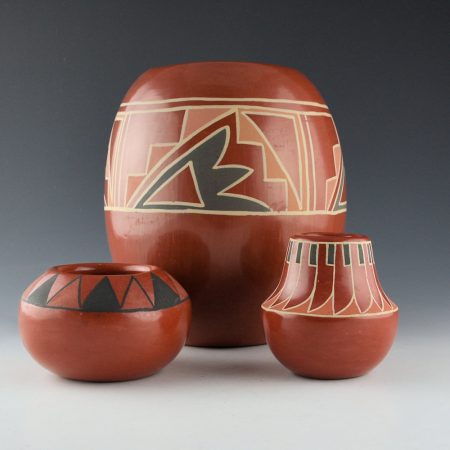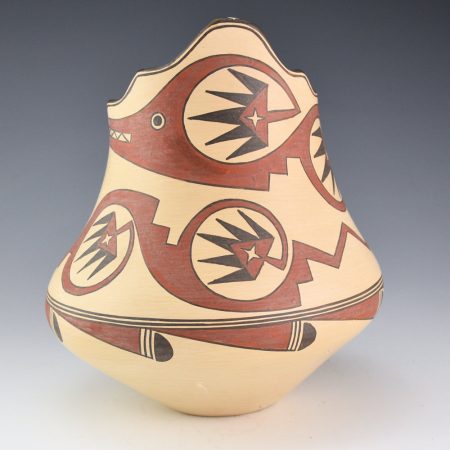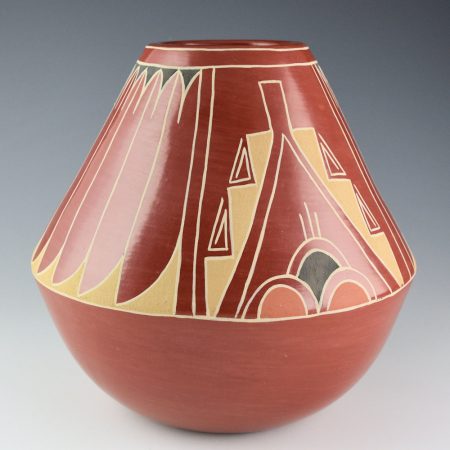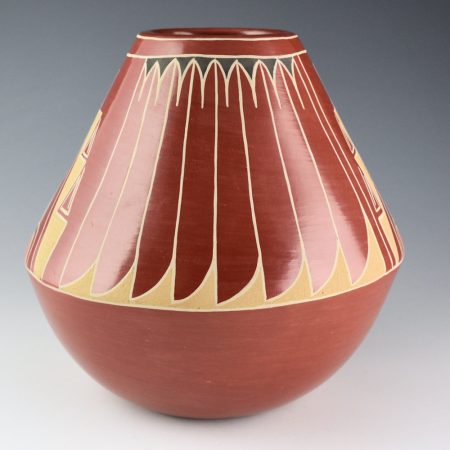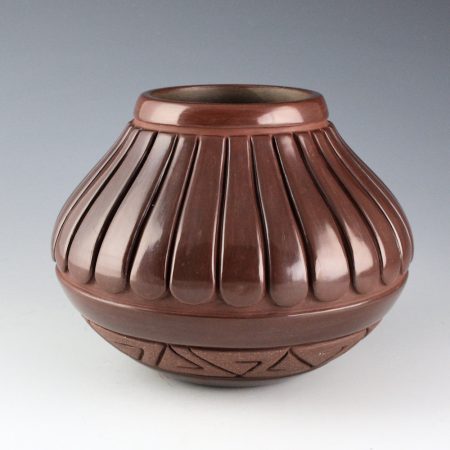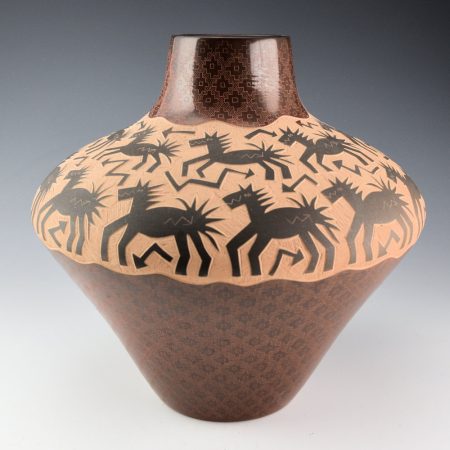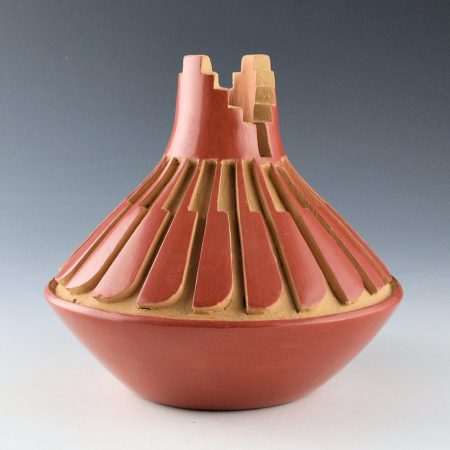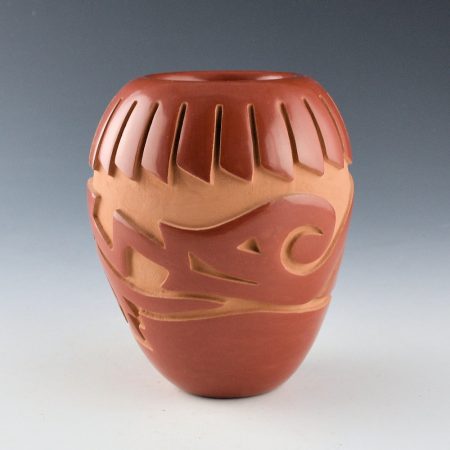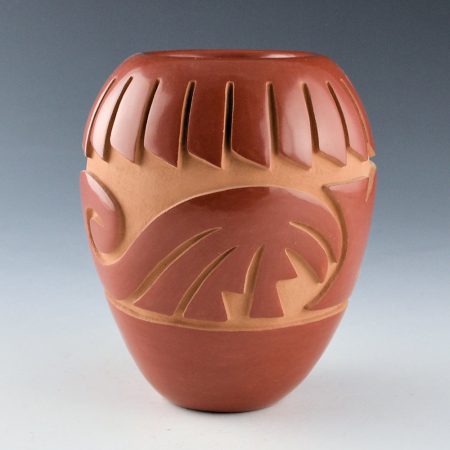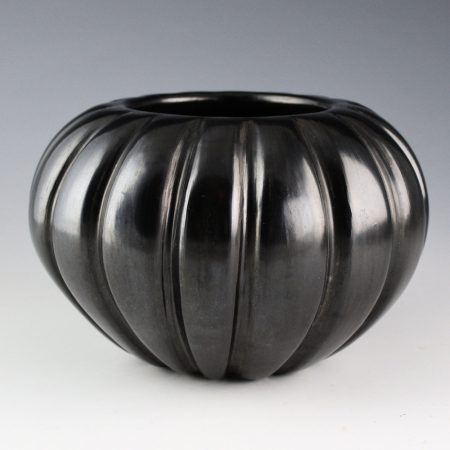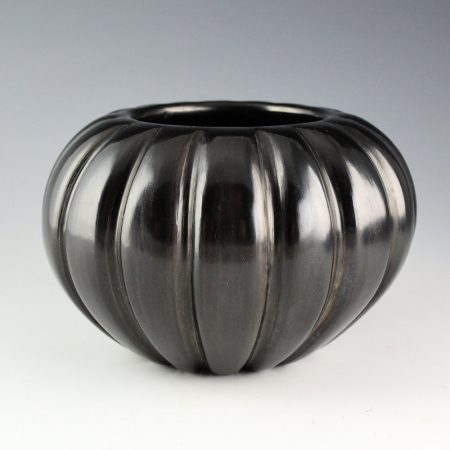Santa Clara Pottery
(Subscribe to new additions email for this category.)
Traditional Name: Kha’p’oo Owinge (Valley of the Wild Roses.) The Pueblo is a member of the Eight Northern Pueblos, and the people are from the Tewa ethnic group of Native Americans who speak the Tewa language. The Pueblo is on the Rio Grande, between Ohkay Owingeh (formerly San Juan Pueblo) to the north and San Ildefonso Pueblo to the south. Santa Clara Pottery and its Pueblo are famous for producing hand-crafted pottery, specifically blackware and redware with deep engravings.
Thanks to cultural pride and a strong sense of identity, the Santa Clara people have retained many of their ancient traditions while integrating them with the best of what the majority culture has to offer. The pueblo has high regard for education, both the tribal heritage and modern education. Santa Clara Pueblo people find employment on the reservation as well as in nearby cities.
Some dances and community festivals are open to the public. In June, St. Anthony’s Feast Day features Comanche Dances. In August, Harvest Dances and Corn Dances are performed in honor of the patron saint, St. Clare.
Regarded as one of the great masters of Pueblo ceramics Margaret Tafoya (1904-2001), a matriarch of Santa Clara Pueblo, is known for her trademark large black polished ceramics. Margaret is decorated with traditional imagery of rain clouds, water serpents, bear paws, and other family symbols. An award-winning artist, she was the recipient of the Lifetime Achievement Award from the Southwestern Association for Indian Arts and a National Heritage Fellowship. She had twelve children, eight of whom became potters; Virginia Ebelacker, Lee Tafoya, Toni Roller, LuAnn Tafoya, Mela Youngblood, Jennie Trammel, Mary Ester Archuleta, and Shirley Tafoya. Her grandchildren and today great-grandchildren carry on the traditions of making pottery. Margaret was a guardian of traditional pottery-making methods and techniques. She created large storage vessels with stone-polished surfaces. Her carving was done before the piece was polished. She created her amazing work from the 1920s through the 1980s.





